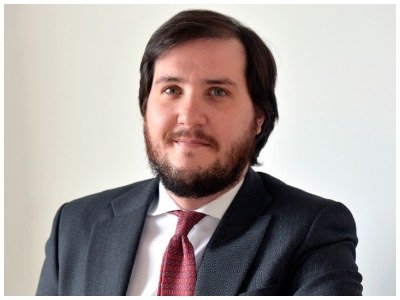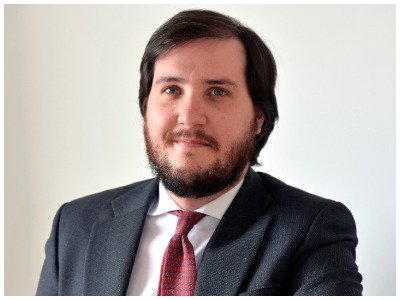Property boom

With investors increasingly targeting assets in the Iberian real estate sector, Stoneshield Capital’s chief operating officer Alejandro Maristany says rental housing is one of the particularly attractive propositions at present, and the input of legal advisers will be vital when completing deals
 The Iberian real estate sector is attracting plenty of investment. Despite concerns that investors may be more cautious in the coming months amid speculation that the global economy could be set for a significant slowdown, Alejandro Maristany, chief operating officer of Spanish investment fund Stoneshield Capital says there is considerable momentum in the property sector, with growing interests in logistics and alternative assets [that is more unusual types of asset]. Maristany adds that the development of rental housing will also generate a substantial amount of deals in the coming year.
The Iberian real estate sector is attracting plenty of investment. Despite concerns that investors may be more cautious in the coming months amid speculation that the global economy could be set for a significant slowdown, Alejandro Maristany, chief operating officer of Spanish investment fund Stoneshield Capital says there is considerable momentum in the property sector, with growing interests in logistics and alternative assets [that is more unusual types of asset]. Maristany adds that the development of rental housing will also generate a substantial amount of deals in the coming year.
Stoneshield Capital was established in early 2018 with €300 million to invest in real estate. US tycoon Warren Buffet is among the investors who have contributed funds to Stoneshield, which was founded by two former directors of the US fund Lone Star, Juan Pepa and Felipe Morenés. In an interview with Iberian Lawyer, Maristany, expressed optimism about the future prospects for the Iberian real estate sector, where investment has increased from less than €5 billion in 2010 to €20 billion in 2018. As Maristany explains the Iberian real estate market is a very mature one, but compared to the British or German markets, for example, there is the potential for higher yields.
What type of deals are investors targeting in the Iberian market at the moment?
Obviously a lot depends on the type of investor, but, as a general rule, the profile of deals has evolved since the end of the financial crisis and we have gone from a market in which most investors sought high returns, due to country risk – involving investors with an opportunistic profile – to a market with more institutional investors or more of a core profile. Such institutional investors seek lower returns from deals with lower risks and greater movement over time. In other words, right now we could say that we are in a mediumhigh part of the cycle in which lower yields are captured, but they are possibly more sustained over time, which makes the general profile of investors more institutional and less opportunistic or speculative.
What are the most attractive assets?
At the moment the most attractive products are the so-called ‘alternatives assets’ such as nursing homes or student residences, together with the development of rental housing. These products are in great demand both among investors – as they are highly developed products throughout Europe – as well as by the end customer. In addition, at the point in the current cycle, they continue to give good returns which increases their attractiveness. Another very powerful market at the moment is logistics, mainly due to the rise of e-commerce, which means that retail companies have to have increasingly larger storage spaces near urban centers for fast deliveries – it is what is called ‘last-mile delivery’, which is now very fashionable. Of course, the prime office and residential market continues to be attractive, especially in Madrid, Lisbon and Barcelona.
What are currently the biggest obstacles when it comes to investing in the Iberian market?
Well, it depends on the sector, but I think that, in general, the obstacles and barriers are getting smaller and smaller. I think that the real estate industry has made a major effort to professionalise the sector. Although we continue to see strong positions being held by small families or religious orders (in university residences or colleges, for example), with whom it is always more difficult to negotiate, the truth is that it is becoming easier and easier for investors to enter the Iberian market. Both in Spain and in Portugal, moreover, at the registry and legal level the rules are clear and, although we have insisted on codifying everything, which makes it difficult to adapt to initiatives such as co-living or coworking, the truth is that knowing the rules of the game provides a lot of security when it comes to making investments.
Do you think more investors will start targeting the Iberian market?
No doubt about it. It is a very mature and healthy market in which, compared to markets such as Britain or Germany, you can find investments with higher returns and similar risks. This is demonstrated by the levels of investment in recent years – investment in the Iberian real estate sector was close to €20 billion in 2018, which compares to less than €5 billion in 2010.
What do you think will be the investment trends in the Iberian market in the coming year?
It will be a year in which there will be a large number of deals related to the development of housing for rent (‘build to rent’) with the idea of creating large portfolios of housing in areas on the periphery of large cities, in particular. It is a very attractive type of product for institutional investors and, in Spain, for example, it can be structured by means of a real estate investment trust (known as a SOCIMI in Spain) or EDAVs (entities involved in the leasing of housing), which also allows them to be tax efficient operations. Taxation in Portugal is a little more complex in residential development, but we will probably also see these types of deals.
To read the article in full please download issue N.89 here












